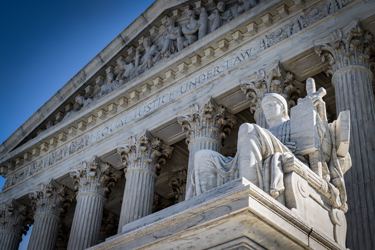Supreme Court Sides With Environmentalists In Hawaii Clean Water Case


The highest court in the country has ruled in support of environmentalists and in opposition of the Trump administration in a case from Hawaii with significant implications for how the Clean Water Act could be interpreted elsewhere.
“The U.S. Supreme Court rejected a claim by Maui County that the Clean Water Act does not apply to wastewater that seeped from its Lahaina injection wells into the ocean,” Hawaii News Now reported. “The Trump Administration sided with Maui County, but in [the] 6 to 3 ruling, the justices sent the case back to a lower court to reconsider with a different standard.”
In a case that has been debated for months, Maui County argued that the Clean Water Act — a federal law that governs pollution into surface waters — should only apply to waste discharged directly into navigable waters. It argued that the act should not apply when waste is discharged and filtered through groundwater first.
“The case revolves around a Maui County wastewater treatment plant in Lahaina that pumps millions of gallons of treated sewage into the groundwater each day using underground injection wells,” Honolulu Civil Beat explained. “That groundwater, mixed with treated sewage, then travels underground and seeps into the ocean where studies have shown that it promotes algae growth that suffocates and kills the coral reefs and other marine life.”
Environmental groups sued over the practice in 2012 and the case eventually reached the Supreme Court. Maui County was bolstered in the legal battle by the Trump administration and major oil and gas operations who might have benefited from a more lenient interpretation of the Clean Water Act, like the American Petroleum Institute.
“The administration joined the case and latched on to Maui County’s argument that it did not need a permit because it was not discharging waste directly into the ocean, but instead mixing it with groundwater that then percolated out to sea,” per Honolulu Civil Beat. “The ‘who touched it last’ theory also rallied fossil fuel companies and other major industry polluters, several of which wrote legal briefs in support of Maui County and the administration.”
An opinion written by Associate Justice Stephen Breyer following the Supreme Court ruling indicated that such an interpretation of the Clean Water Act would create a major loophole that would allow for easy evasion of the rule.
If the lower court judges stick with their previous rulings in the case, Maui County will likely have to come up with a plan that cuts down on its pollution. It’s possible that the legal battle will continue, but the county has already approved a reported $4.3 million in outside legal counsel fees and may not want to prolong the process any further.
To read more about the rules that govern discharge into surface waters, visit Water Online’s Regulations And Legislation Solutions Center.
